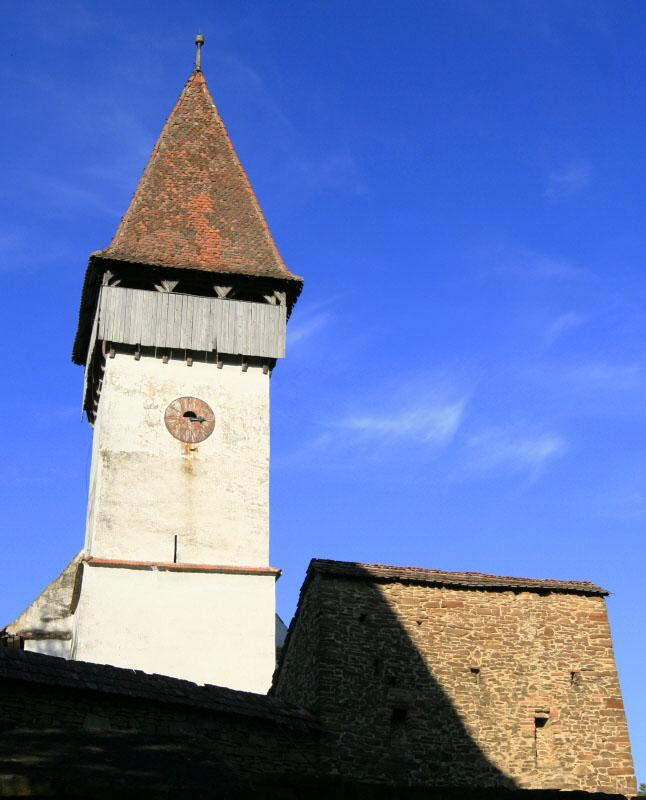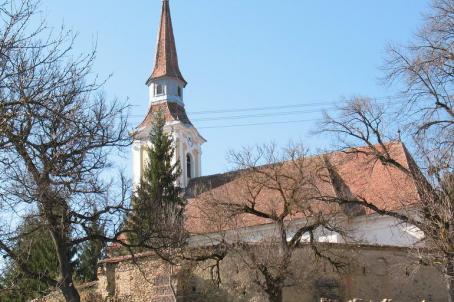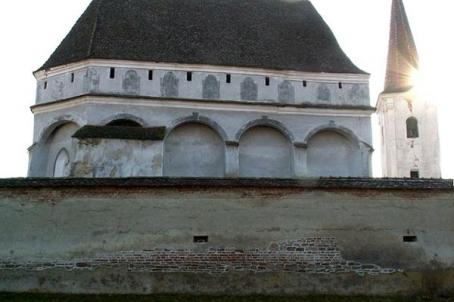Meşendorf Fortified Church
The early Gothic hall church built in the 14th century with western tower and polygonal chancel was prepared for defence in 1495. The tower was fortified with a wooden defence level, as well as the nave and the chancel. While the vaults of the church were removed because of the risk to collapse during the renovation work in the early 19th century, the tower has been preserved in its medieval form. The fortification wall was protected with three defence towers, of which two are still preserved and an outer bailey was built in the 16th century in the south-western part. A part of this wall was demolished in 1888, allowing a school to be built in that space. The three sides wooden gallery, decorated with Baroque paintings and the winged altar from 1693 above which the 1914 organ is installed, dominates the interior.
About this building
For more information visit on this building visit https://kirchenburgen.org/en/location/meschendorf-mesendorf/






